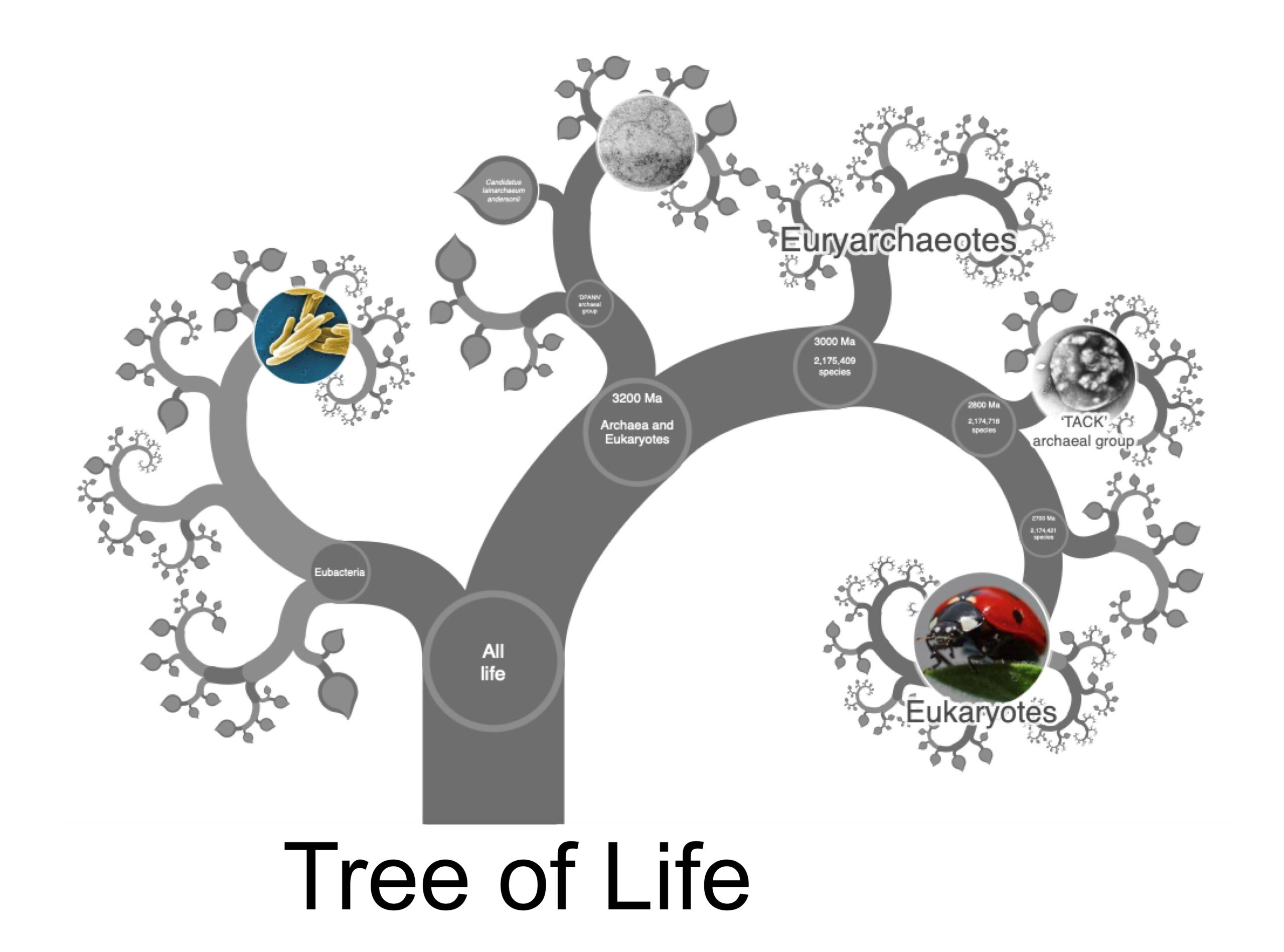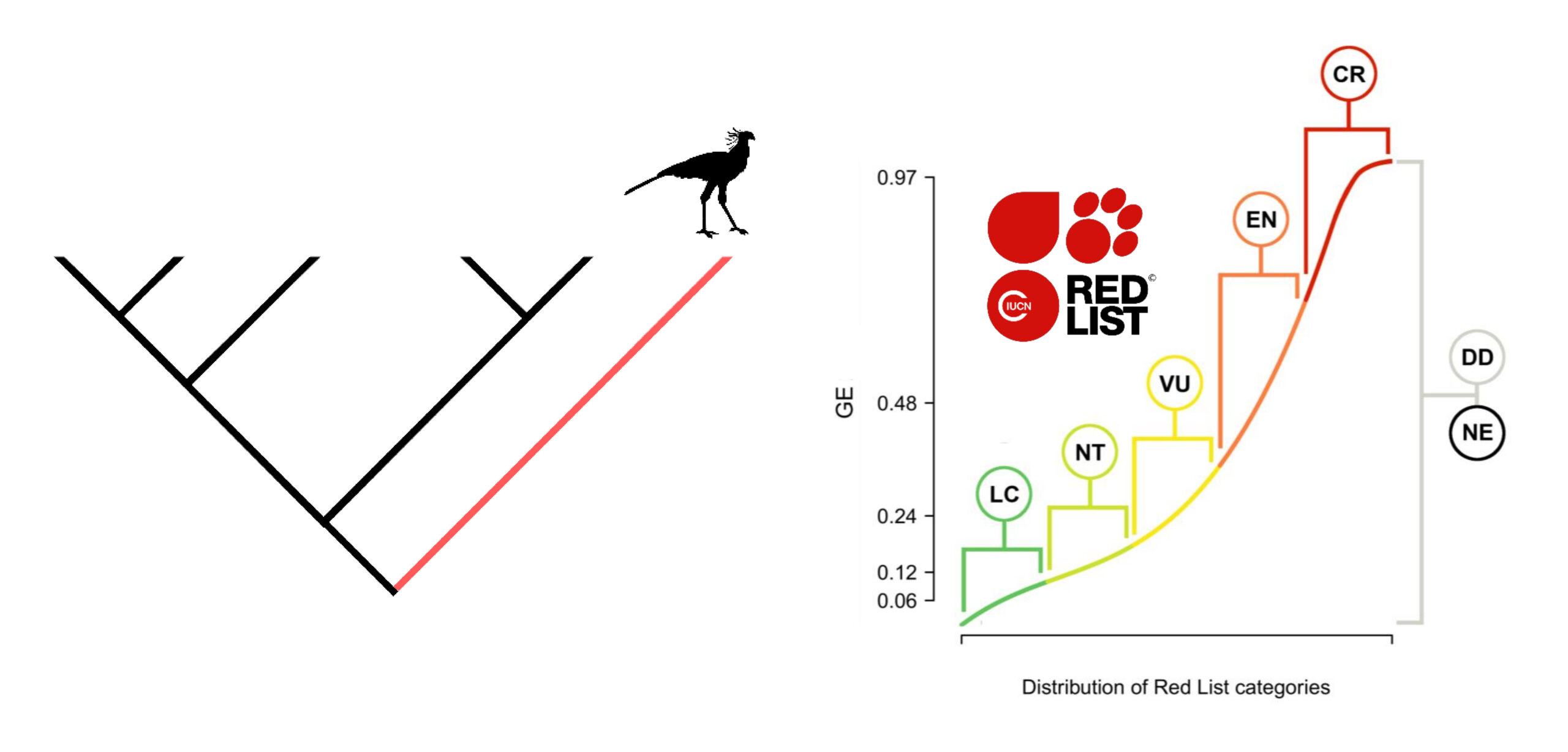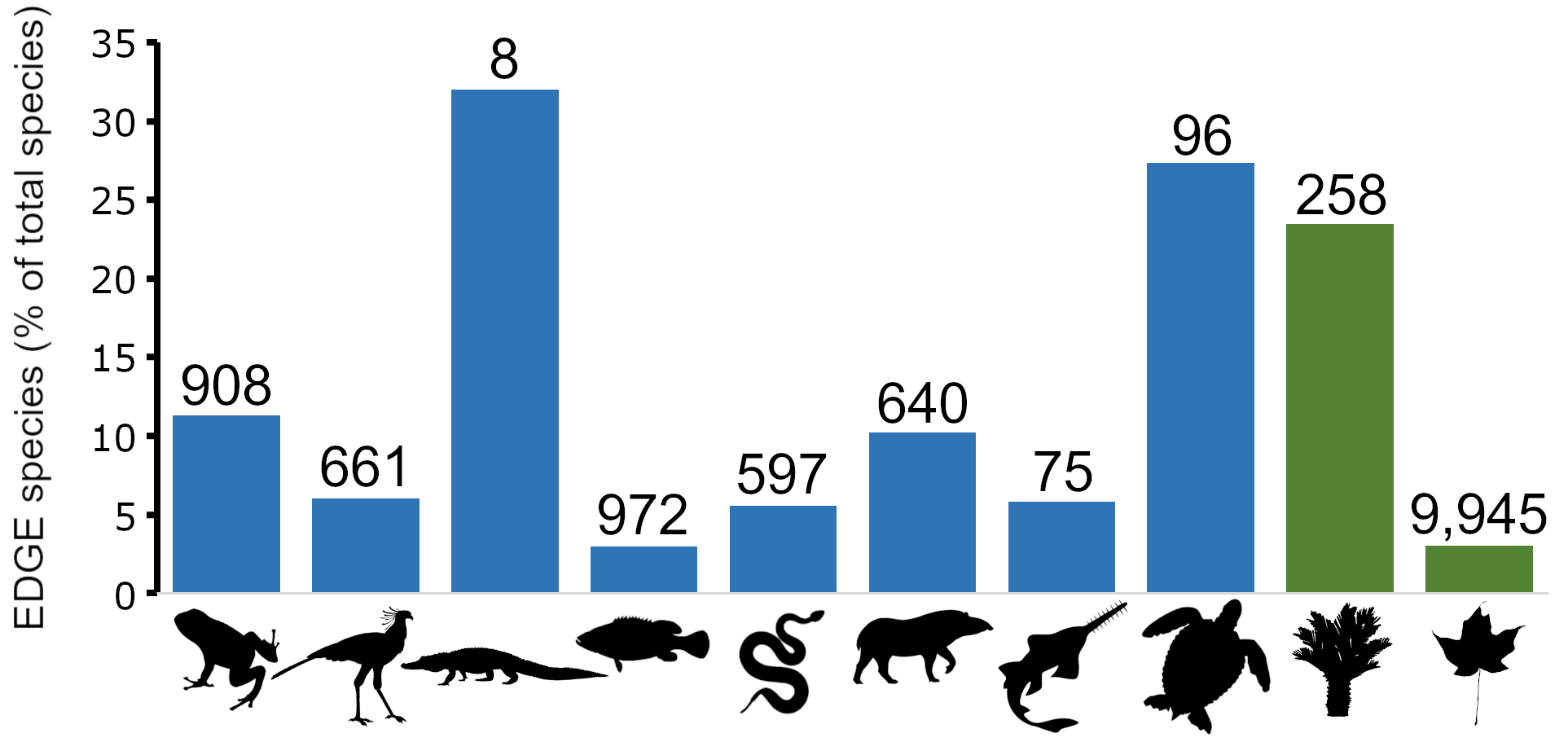The EDGE of Existence programme uses EDGE Lists to prioritise species for conservation. EDGE Lists comprise the most evolutionarily distinct and threatened species on Earth—EDGE Species—the loss of which would represent the loss of long branches of the Tree of Life.
The latest EDGE Lists for amphibians, birds, mammals, ray-finned fish, reptiles, sharks and rays, freshwater crayfish, and gymnosperms are available for download here. These lists are based on a 2021 taxonomic treatment and 2022.2 Red List data, see here for more information.
It is important to note that these EDGE Lists comprise only the species that meet the criteria to be considered EDGE Species. Read on for more information on how we create EDGE Lists.
What is the Tree of Life?
The Tree of Life is a metaphor used to represent the shared and unique evolutionary histories and relationships of all life on Earth. At the base of the tree is the deep past, the origin of all life on Earth. At the tips of this ‘tree’ are the leaves, representing species alive today. These leaves are connected by branches, which stretch back in time and represent the evolutionary pathways taken by lineages from the distant past to the present day.

How we identify EDGE Species
EDGE Species are custodians of evolutionary history; threatened species that, should they be conserved, are expected to secure long branches of the Tree of Life into the future. EDGE species are identified using two criteria:
- how much evolutionary history a species is expected to be responsible for in the future (Evolutionary Distinctiveness), derived from the phylogenetic tree for a group of species;
- how close a species is to extinction (Global Endangerment), taken from the IUCN Red List.
Species that score highly for both their Evolutionary Distinctiveness and Global Endangerment sit atop the EDGE scores for their respective taxonomic groups (e.g., mammals). We calculate EDGE scores many times for each species to ensure we incorporate uncertainty around both the evolutionary relationships of that species with its relatives and how close the species is to extinction. Only species for which we can be highly confident that they are both highly evolutionarily distinct and globally endangered make it onto the EDGE List as a priority EDGE Species.

EDGE Lists
An EDGE List comprises those species that are listed as threatened on the IUCN Red List (Vulnerable, Endangered, Critically Endangered, Extinct in the Wild) and for which we have at least 95% confidence they have an EDGE score above the median for their taxonomic group. To read the full methods underpinning the EDGE calculation, see here.
EDGE scores have been calculated for more than 70,000 species of vertebrates (amphibians, birds, mammals, reptiles, fish) and more than 340,000 species of plants. Work is ongoing to generate EDGE scores for all life on Earth, with a focus now on invertebrates.

We maintain EDGE Lists for all groups for which scores are available. Our EDGE Lists are updated periodically to incorporate changes in both taxonomy and extinction risk of EDGE Species, and we provide the most recent data for download.
The latest ED and EDGE scores for all species in each group are available upon request by emailing info@edgeofexistence.org.
When creating our EDGE amphibians list, we follow the taxonomy of Frost’s Amphibian Species of the World. For birds, we follow BirdLife International. For fish we follow FishBase. For mammals, we follow The Mammal Diversity Database. For reptiles, we follow The Reptile Database, and for plants we follow Plants of the World Online.